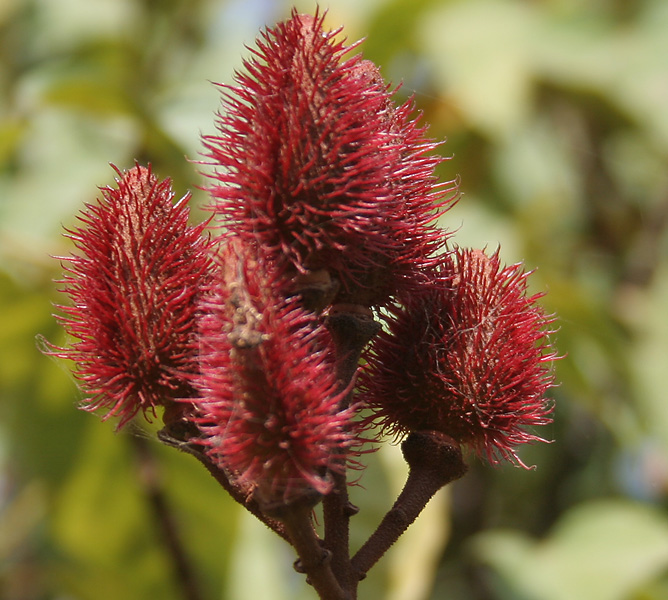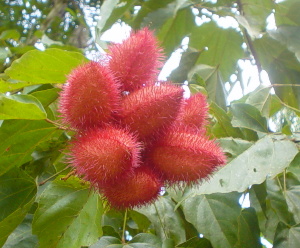
Achiote (Bixa orellana) is a shrub or small tree from the tropical region of the American continent. The name derives from the Nahuatl word for the shrub, achiotl. It is also known as Aploppas, and its original Tupi name urucu. It is cultivated there and in Southeast Asia, where it was introduced by the Spanish in the 17th century. It is best known as the source of the natural pigment annatto, produced from the fruit. The plant bears pink flowers and bright red spiny fruits which contain red seeds. The fruits dry and harden to brown capsules.





The inedible fruit is harvested for its seeds, which contain annatto, also called bixin. It can be extracted by stirring the seeds in water. It is used to color food products, such as cheeses, fish, and salad oil. Sold as a paste or powder for culinary use, mainly as a color, it is known as "achiote," "annatto," "bijol," or "pimentão doce." It is a main ingredient in the Yucatecan spice mixture recado rojo, or "achiote paste." The seeds are ground and used as a subtly flavored and colorful additive in Latin American, Jamaican and Filipino cuisine.
Annatto is growing in popularity as a natural alternative to synthetic food coloring compounds. While it has a distinct flavor of its own, it can be used to color and flavor rice instead of the much more expensive saffron. It is an important ingredient of cochinita pibil, (here's the recipe) the spicy pork dish popular in Mexico. It is also a key ingredient in the drink Tascalate from Chiapas, Mexico.
In addition to foods, this seed and pulp are used to color candies, cosmetics and textiles. The achiote has long been used by American Indians to make body paint, especially for the lips, which is the origin of the plant's nickname, lipstick tree. The use of the dye in the hair by men of the Tsáchila of Ecuador is the origin of their usual Spanish name, the Colorados.
Parts of the plant can be used to make medicinal remedies for such conditions as sunstroke, tonsilitis, burns, leprosy, pleurisy, apnoea, rectal discomfort, and headaches. The sap from fruits is also used to treat type 2 diabetes, and fungal infections.
To prepare the Achiote, place the seeds into the liquid ingredients being prepared or add the seeds to hot water to obtain the color and flavor desired before using the mixture to color rice or as a stock to add flavors to other foods. To store, keep the seeds in an airtight container away from heat.
Saturday, August 30, 2008
All About Achiote
Labels: misc., native plants
Subscribe to:
Post Comments (Atom)
The images on this website are protected by copyright.
Please do not use them without permission.
Thought for Today
We need to find God, and he cannot be found in noise and restlessness. God is the friend of silence. See how nature - trees, flowers, grass- grows in silence; see the stars, the moon and the sun, how they move in silence… We need silence to be able to touch souls. ~Mother Teresa






0 Comments:
Post a Comment